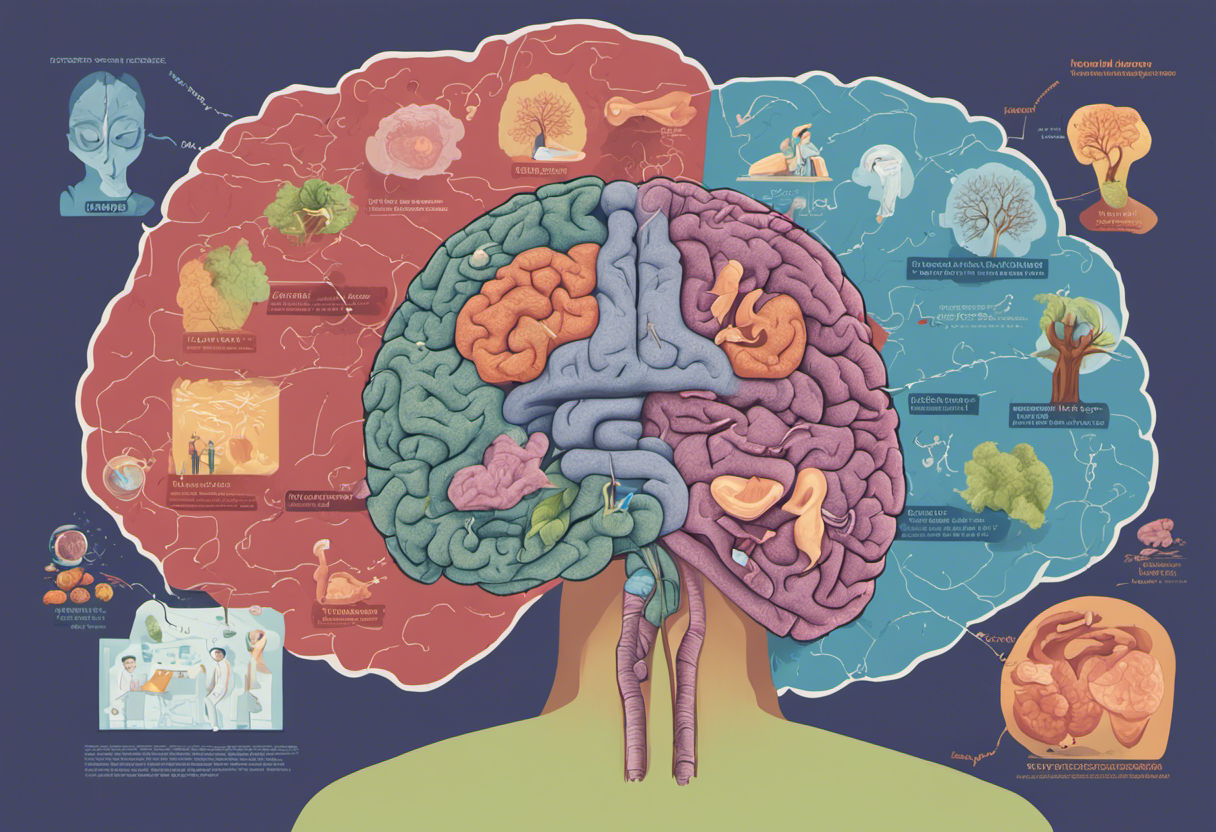Level Up Memory Game Success: Unleashing the Power of Testing & Tracking

Imagine this: you’re enjoying a memory game, archiving high scores and relishing each level’s thrill. Suddenly, you experience a glitch that ends your spree. Frustrating, isn’t it? That’s where memory game testing and progress tracking come into play, ensuring a seamless gaming experience.
In a world where gaming has skyrocketed to new heights, creating a successful memory game hinges on extensive testing and meticulous tracking of gamer progress. Not only does this ensure a flawless gaming environment, but it also helps adapt to player preferences and improve the overall fun factor. The relevance? If you are an aspiring game developer or an avid gamer seeking thrilling experiences, understanding the power of game testing and tracking is crucial.
In this article, we’ll dive deep into the fascinating world of memory game design – from exploring various types of tests applied in game development to uncovering methods for tracking gamers’ progress. Further on, we’ll delve into how employing tracking can enhance the user’s gaming experience and finally look at a case study exemplifying the successful application of testing and tracking in a popular memory game.
By wielding game analytics tools, feedback mechanisms, and user session recordings, any developer can take their memory game from good to great – or any gamer could enhance their experience significantly. So buckle up as we guide you through this captivating journey!
Introduction to Testing and Tracking Memory Game Progress
Testing and tracking constitute key nettle points in constructing an impactful gaming environment, specifically for memory games. Whether a game is being developed or played, understanding these two concepts can yield significant advantages. This understanding allows developers and gamers to create, adapt, refine, and enjoy the gaming experience.
Understanding What Testing Is
Testing in game development dives much deeper than seeking out bugs or glitches within a game. It’s essentially about validating and verifying that the game functions as intended, offering the desired experience to the players. It helps establish smooth-running user scenarios, ensures faultless gameplay mechanics, and fine-tune player engagement in the game.
Types of Tests Applicable in Game Development
Numerous forms of testing are applicable in the world of game development. For example, functional testing evaluates a game’s functionality; compatibility tests that ensure that your game runs across a range of platforms, playability tests that emphasize the game’s fun factor; and balance testing that ensures a fair playing field for all players. Additionally, localization tests confirm that the content is appropriate for different regions around the globe.
Each type of testing serves a unique role in shaping memory games by uniting all gaming elements harmoniously into one composite product.
Overview of Tracking Game Progress
Unlike testing, tracking provides insights into how players interact with your game after its release. By monitoring players’ advancement within the game, developers acquire invaluable information that aids in refining and optimizing future versions or development choices.
The Importance of Tracking Memory Game Progress
With respect to memory games, tracking progress bears crucial importance due to the inherent nature of these games that require progression based on cognitive skills revolving around recall powers and pattern recognition talents. Thus, understanding how individual players progress over time gives an inkling about their cognitive development and learning adaptability.
Moreover, consistent tracking can reveal areas where players typically struggle, areas where players perform exceptionally well, player preferences, and the overall effectiveness of the game design. By leveraging these insights, developers can tailor future updates or versions, adjusting difficulty levels and challenges to create an enriching user experience.
Furthermore, employing techniques like game analytics, including user session recordings and feedback mechanisms, offer deeper scrutiny – they unlock fundamental knowledge about player behavior patterns and game interactions, enriching the gaming landscape for both the players and the developers.
The Process of Testing Memory Games
Memory games can engage a player’s cognitive skills in many ways. However, to ensure that they function smoothly and offer the best user experience, rigorous testing is applicable at various stages:
Unit Testing
In the domain of game development, unit testing often represents the smallest piece of testable software in an application. It could be a single method, function, or feature within the game. Primarily, it involves verifying each part of the game independently before integrating them into the whole system. For instance, individual memory cards or tiles may be tested for functionality and interactivity.
Integration Testing
Following unit testing, we now embark on stitching together the different parts to form a coherent whole. The purpose of integration yet is to identify issues that arise when various components interact with each other. Imagine verifying whether flipping one memory card affects the state or behavior of others within the memory game.
System Testing
Lastly, once all components are integrated successfully, system testing takes place. It involves validating the entire memory game system and its compliance with specific requirements. This phase ensures that the game works as intended, under varied conditions and on different types of devices.
Methods of Tracking Memory Game Progress
Tracking progress in memory games is essential for players to evaluate their performance and for developers to get insights into game efficiency.
Using Game Analytics
Game analytics involve collecting data from various touchpoints within the game and interpreting it meaningfully to make informed decisions. Metrics like session time, user engagement rate, or frequent bottlenecks can help developers better understand player preferences and behaviors.
Feedback Mechanism
Implementing a robust feedback mechanism allows players to share their experiences and suggestions about different aspects of the game. Feedback could range from user interface improvements to gameplay difficulties or new feature requests.
User Session Recording
Recording user sessions can unveil numerous insights about game performance and user behavior. By replaying these recordings, developers can understand how players interact with the game, providing hands-on data for effective decision-making.
Role of Tracking in Improving Game Experience
Properly tracking memory game progress can significantly enhance the overall gaming experience.
Improving Gameplay and User Interface
Developers can improve the game’s functionality and appearance through tracking tools and player feedback. It could be about making controls more intuitive, improving graphics, or enhancing the accuracy and speed of swipes and clicks.
Identifying Pain Points in the Game Flow
By monitoring player progress, developers can identify hurdles or frustrations faced by players. Could a level be too complex, or is the update bandwidth affecting playability? Based on tracking data, these pain points can be addressed properly.
Enhancing the Fun Factor
Overall, closely following a user’s journey in the memory game allows modifications that make gameplay more exciting, intriguing, and enjoyable. For instance, instilling rewards systems or curator events based on user preferences would keep them returning for more.
Case Study: Successful Application of Testing and Tracking in a Popular Memory Game
An excellent example of the effective use of testing and tracking is Lumosity’s memory games. Through extensive testing methods, they ensured a smooth user interface. Moreover, progress tracking via analytics allowed them to identify patterns in user behavior and tweak aspects to increase engagement rates. Thus, implementing regular updates based on player feedback helped them maintain an optimal balance between challenge and fun. This case study symbolizes how diligent tracking and testing could significantly refine a memory game experience.
Conclusion
In the realm of game development, testing, and tracking are powerful tools used to refine user experience and adapt to player preferences. They can transform an ordinary memory game into a captivating cognitive adventure with the right methods and applied effectively. Functional and compatibility testing, unit, integration, and system testing are necessary to ensure every piece of the game works harmoniously for an optimal gaming experience.
Tracking progress using techniques like game analytics, feedback mechanisms, or user session recording plays a vital role in understanding players’ cognitive development and learning adaptability. These insights can direct changes in the game design that motivate players while providing them with a challenging yet enjoyable experience.
We’ve also seen how Lumosity brilliantly applied these techniques to build engaging and seamless memory games. As aspiring developers and avid gamers, we have much to learn from their examples.
The journey doesn’t end here – as technology evolves, new possibilities for testing and tracking will undoubtedly emerge. For anyone involved in game development or even if you’re just a passionate gamer looking to understand more about the games you love, diving into these concepts opens doors to endless opportunities for innovation. Keep exploring!




Comments